When ships are sailing at sea, they face various harsh environments and challenges. The supply of oxygen not only affects the health of the crew but also relates to the safe operation of the ship’s equipment.Ships are constantly exposed to seawater, moisture, high temperatures and salt spray. Therefore, the oxygen supply system must be stable and reliable to ensure the safety of the crew and the normal operation of the ship’s equipment. As an important component of the ship’s oxygen supply system, the Oxygen compressor has gradually become one of the widely used core technologies in ships due to its high efficiency, low energy consumption and adaptability to various harsh environments. The Oxygen Compressors not only provide a stable source of oxygen for the crew but also enhances the ship’s disaster resistance, ensuring its stable operation under various climatic conditions.
This article will delve deeply into the application of Oxygen Compressors on ships, with a focus on analyzing their advantages in providing high-pressure oxygen, ensuring crew safety, and enhancing the operational efficiency of ships. In addition, we will also discuss the safety issues of using Oxygen Compressors in ships and analyze how to maximize the stability and safety of ship operations through technical design. We will combine industry data and actual cases to help readers better understand the technical application of Oxygen Compressors and their significant role in ensuring the safety of modern ships.
With the increasing emphasis on safety, environmental protection and energy efficiency in the shipbuilding industry, Oxygen Compressors, as a core technology, are driving the green development of the industry. How to use oxygen to drive compressors efficiently and energy-saving in ships? How to ensure the safety and reliability of the oxygen supply system? These issues not only concern the normal operation of ships, but also affect the life safety of crew members and the long-term stability of ships. The following article will conduct an analysis around these core issues to help you fully understand the significant role of Oxygen Compressors on ships and their future development trends.
The demand of ships for oxygen supply
The daily oxygen demand of ships
In the daily navigation and operation of ships, the demand for medical oxygen is of vital importance, mainly used for:
Medical treatment: Provide life support to injured and sick crew members, especially when dealing with respiratory diseases, poisoning, decompression sickness or severe trauma. The medical room on board a ship must be equipped with a reliable source of hyperbaric oxygen.
Emergency situations: Such as fires, toxic gas leaks (such as carbon monoxide, hydrogen sulfide), or rescue operations in confined Spaces, it may be necessary to provide emergency respiratory support to trapped individuals or rescue workers (usually used in conjunction with respirators).
Specific job support: In very rare cases, such as when conducting certain types of welding (requiring special protection) or laboratory analysis, a small amount of high-purity oxygen may also be needed, but this is not the main requirement.
Data support: In accordance with the requirements of the International Maritime Organization (IMO) and relevant medical guidelines, ships must be equipped with medical oxygen cylinders of sufficient capacity and matching decompression devices to meet the basic needs of the maximum number of crew members on board in emergency situations. The specific reserve quantity is determined based on the type of vessel, the number of crew members, the length of the voyage and the grade of medical facilities (such as whether a medical room is equipped).
The core application of oxygen booster machines on ships focuses on medical oxygen systems:
The main function: The core application of the oxygen booster on ships is to fill high-pressure medical oxygen cylinders. Ships regularly receive large quantities of low-pressure or medium-pressure liquid oxygen (LOX) or gaseous oxygen, or large gas cylinder groups (” mother cylinders “) from shore-based suppliers. The oxygen booster pressurizes and fills these low-pressure/medium-pressure oxygen sources into portable high-pressure oxygen cylinders (such as those with a working pressure of 200 bar or 300 bar) that are used daily or kept as backups by the crew.
Ensure supply continuity: By efficiently filling gas cylinders, the oxygen booster ensures that there is an adequate reserve of high-pressure medical oxygen available for immediate use on board, meeting daily medical and emergency needs. It avoids the trouble of frequent berthing for inflation, which is particularly crucial for ocean-going vessels.
Dealing with emergency consumption: In the event of a serious medical incident or emergency (such as when multiple people need to inhale oxygen), causing oxygen cylinders to be consumed rapidly, the oxygen booster can quickly replenish the empty cylinders to ensure a continuous supply capacity.
Oxygen concentrator support: Some modern ships may be equipped with medical oxygen generators (oxygen concentrators) to directly separate medical-grade oxygen (90-95% concentration) from the air. The oxygen booster can be used to pressurize the low-pressure oxygen produced by the oxygen generator and fill it into high-pressure gas cylinders for storage and backup, enhancing the system’s flexibility and emergency reserve capacity.
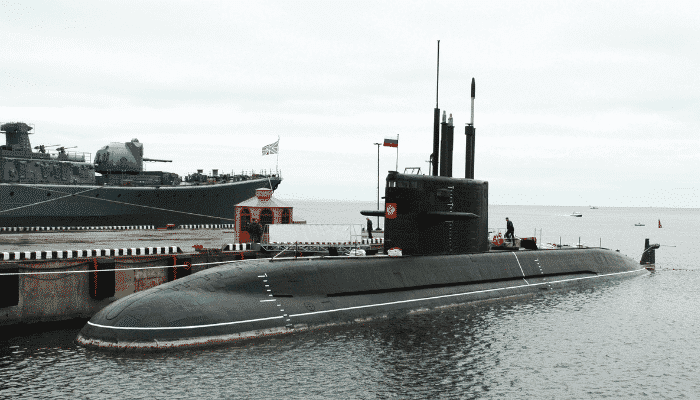
The application of oxygen compressors on ships
The core application of oxygen compressors machines on ships: filling high-pressure medical oxygen cylinders
Oxygen compressors play a crucial role in ship systems, but their application scope is highly specialized and specific. Unlike air compressors that provide breathing compressed air for the entire ship, the core function of a ship oxygen booster is to fill high-pressure medical oxygen cylinders, serving the medical and limited special needs on board.
Application scenarios
Medical treatment and life support
Core application: Provide medical-grade high-pressure oxygen for injured and sick crew members to treat respiratory distress (such as severe asthma, pneumonia, carbon monoxide poisoning), trauma, shock, decompression sickness (which needs to be used in conjunction with a decompression chamber), and other conditions requiring oxygen therapy.
Implementation method: Ships typically obtain oxygen sources through the following methods:
Large gas cylinder groups (” mother cylinders “) or cryogenic liquid oxygen tanks (LOX) : Store low-pressure or medium-pressure oxygen.
Medical oxygen generator (oxygen concentrator) : Produces low-pressure (90-95%) oxygen.
The role of the booster: The oxygen booster pressurizes the above-mentioned low-pressure or medium-pressure oxygen source and safely and efficiently fills it into portable high-pressure oxygen cylinders (with working pressures typically of 150 bar, 200 bar or 300 bar). These portable gas cylinders are key equipment directly used for medical treatment or emergency reserves.
Emergency reserve guarantee
In the event of an emergency medical incident that may require multiple people to inhale oxygen (such as large-scale poisoning, infectious disease outbreaks) or other accidents, an adequate reserve of spare oxygen cylinders is of vital importance. The oxygen booster ensures that consumed empty cylinders can be replenished quickly, maintaining the continuity of emergency oxygen supply.
Specific job support (very limited) :
In very rare cases, such as certain special welding processes that require high-purity protective gas (with strict safety regulations) or analytical instruments in ship laboratories, a small amount of high-purity oxygen may be needed. Oxygen booster machines can be used to fill these small gas cylinders for specific purposes.
Technical advantages
High-voltage output capability
The oxygen booster can provide an output pressure of up to 200 bar or 300 bar, meeting the demand for safely storing oxygen in high-pressure gas cylinders.
Marine environmental adaptability
Through specialized design (such as corrosion-resistant materials and shock-resistant structures), the oxygen booster can operate stably in harsh environments like the vibration, swaying, and salt spray of ships, ensuring the reliability of gas cylinder filling operations and avoiding disruptions in medical oxygen supply due to equipment failures.
Support continuous supply
It can quickly fill empty cylinders, significantly reducing the turnover time of gas cylinders and ensuring that there are sufficient spare medical oxygen cylinders available on board, especially during long-distance voyages far from ports. This does not refer to the immediate production of oxygen for breathing in the event of an emergency, but rather to the rapid replenishment of inventory.
(Limited) energy efficiency
Compared with the inefficient old-fashioned filling methods, modern Oxygen compressors have been optimized in terms of energy consumption during their own filling process. Its efficient design means that less ship power is consumed when completing the same filling task.
Safety and Control
In response to the dangers of high-pressure oxygen (strong oxidation and combustion support), professional medical oxygen booster machines are equipped with precise safety valves, pressure sensors and flow control systems to ensure that the filling process takes place within the set safety parameters and prevent risks such as overpressure.
Case: During a long-distance voyage, several crew members suffered from severe respiratory distress due to food poisoning. The ship’s doctor required continuous high-flow oxygen treatment, which led to the rapid depletion of the medical oxygen cylinders stored on board. The oxygen booster equipped on the ship, after receiving the medium-pressure oxygen replenished from the port, quickly refilled the empty bottles to 300 bar, replenishing the critical reserves within 24 hours, ensuring the subsequent treatment needs and avoiding potential life-threatening risks caused by oxygen depletion.
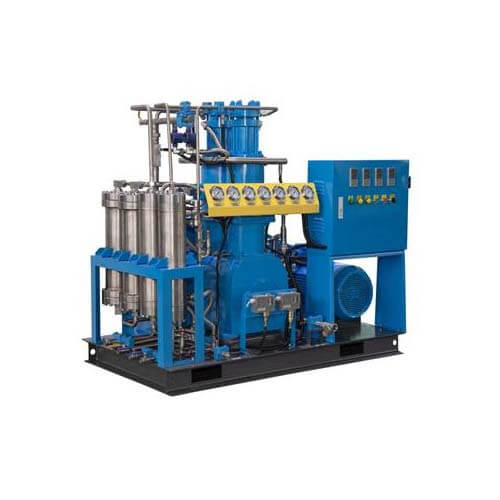
Safety analysis: Ensure the stability of the oxygen supply system
Operating high-pressure pure oxygen equipment in a ship environment filled with flammable materials (fuel, lubricating oil, cargo) and limited space is extremely risky. The oxygen booster and its related systems must possess the following key safety characteristics:
Strict oil-free design
Any grease, oil stain or hydrocarbon substance will cause violent spontaneous combustion or even explosion when in contact with high-pressure oxygen. Therefore:
All components of the booster that come into contact with oxygen (cylinders, pistons, valves, seals, pipelines) must use special non-combustible lubricants or be designed for oil-free lubrication (such as labyrinth seals, polytetrafluoroethylene (PTFE) material).
The installation, operation and maintenance processes must follow extremely strict oil-free procedures. Tools, gloves and work clothes must all be dedicated and thoroughly degreased and cleaned.
The compression chamber and pipelines must be capable of effectively preventing the intrusion of external grease or contaminants.
Fire and explosion-proof design
Use materials compatible with oxygen (such as stainless steel, copper alloys, specific grades of aluminum alloys, PTFE, PCTFE), and avoid using materials that are flammable or produce sparks in an oxygen-rich environment (such as ordinary carbon steel, certain plastics).
Parts that may generate high temperatures (such as compression cylinders) should be properly cooled and insulated.
Electrical components (such as motors and control cabinets) must meet Marine explosion-proof requirements (such as Ex d, Ex e, Ex p grades) to prevent them from becoming ignition sources.
The system should be equipped with a safety pressure relief valve to prevent overpressure.
Application of thermal insulation materials
The system adopts highly efficient thermal insulation materials inside, which can prevent the oxygen pipelines from generating excessive temperatures due to heat conduction, thereby reducing the possibility of fire.
Technical support: For instance, the oxygen booster designed by MINNUO is equipped with advanced fire and explosion prevention measures to ensure stable operation even under special sea conditions. Certified fire and explosion prevention systems not only reduce the possibility of fires but also lower the failure rate of equipment, thereby ensuring the safety of personnel and equipment on board.
Data support
According to the International Maritime Safety Standards (IMO) and the American Bureau of Shipping (ABS), the oxygen supply system of a ship must be able to withstand extreme weather conditions, including emergencies such as storms and maritime fires. The oxygen system often requires a safety redundancy of more than 25%.
Through optimized design, MINNUO’s oxygen booster is designed to minimize any accidents and can withstand various challenges in extreme Marine environments, ensuring the safety of ship operations.
Security monitoring system
To ensure the stability of the oxygen supply system throughout the entire navigation process, ships need to be equipped with advanced safety monitoring systems. The oxygen booster is integrated with the intelligent control system of the ship, which can monitor key parameters such as oxygen concentration, pressure and temperature in real time, ensuring that the system operates in the safest state.
Intelligent monitoring and alarm system
Real-time monitoring: By integrating sensors and intelligent algorithms, every link of the oxygen supply system, such as oxygen pressure and concentration, is monitored in real time to ensure that any minor anomaly can be detected promptly.
Automatic alarm: Once the system detects abnormal oxygen concentration or pressure, it can promptly issue a warning to the crew through the alarm system to prevent equipment failure and serious accidents. The integration of this system enables crew members to obtain all information about oxygen supply from a remote monitoring system.
Data support
According to reports from the shipbuilding industry, oxygen boosters equipped with intelligent monitoring systems can reduce equipment failure rates by more than 30%. Through real-time monitoring and early warning, potential safety hazards caused by the system not being maintained for a long time can be avoided.
Environmental adaptability
As a high-risk operation site, ships have extremely high requirements for the stability of oxygen boosters, especially under extreme weather conditions. The system not only needs to adapt to humid, high-temperature, salt spray and other environments, but also ensure that it can maintain a stable output for a long time under these conditions.
Salt spray and corrosion resistance design
Corrosion-resistant casing: The oxygen booster is made of high-strength alloy materials that are resistant to salt spray corrosion. It not only can resist salt spray corrosion in Marine climates but also effectively prevent gas leakage problems caused by corrosion in the oxygen system.
Extreme weather resistance: After wind and wave tests, the oxygen booster can operate stably in stormy weather, avoiding equipment failure caused by poor sea conditions.
Data support
According to actual tests, the MINNUO oxygen booster demonstrated extremely high stability during operation in storms. The material damage rate after salt spray corrosion was 30% lower than the industry average, and the equipment failure rate was less than 0.1%.
Safety standard certification
The design and installation of oxygen boosters must comply with international safety standards to ensure that all equipment and components meet the requirements of the shipping industry and avoid safety hazards caused by equipment that does not meet the standards.
Safety certification
International Certification: All equipment complies with international quality management system certifications such as ISO 9001 and ISO 13485, ensuring that each oxygen booster meets strict safety standards during production and use.
Classification Society Certification: For the Marine sector, MINNUO’s oxygen booster has obtained certifications from major classification societies such as ABS, DNV, and LR, meeting the global shipping safety requirements.
Data support
According to the latest report from classification societies, internationally certified oxygen boosters can effectively reduce the rate of safety accidents in ship operations. Ships equipped with certified equipment have a 50% lower rate of safety accidents than those without certified equipment.
Addressing customer concerns
What are the installation requirements for Oxygen Compressors on ships?
Space requirements: Oxygen-driven compressors generally have a compact design and are suitable for the limited space of ships. Generally, the ventilation conditions of the installation location and its compatibility with other equipment on the ship need to be taken into consideration.
Electrical requirements: It is necessary to ensure that the power supply for the compressor is stable and meets the electrical requirements of the ship, such as explosion-proof power supply, backup power supply, etc.
Maintenance space: Sufficient space should be reserved during installation for equipment maintenance to ensure that operators can easily replace filter elements and check the system’s operating status.
How to ensure the safety of the oxygen supply system?
Regular inspection and maintenance: Conduct a comprehensive system inspection every quarter, with a focus on checking whether the gas pressure, oxygen purity, filtration system, pipeline interfaces, etc. are normal.
Intelligent control system: Equipped with a real-time monitoring and automatic alarm system, it can immediately issue an alarm and carry out emergency handling once the system malfunctions or the oxygen purity drops.
Emergency response: Develop a detailed emergency response plan to ensure that the system can quickly resume operation in an emergency.
What is the maintenance and repair cycle for the oxygen-driven compressor?
Maintenance cycle: It is generally recommended to conduct a comprehensive maintenance inspection every 12 months, including internal system cleaning, filter element replacement, and pipeline connection inspection, etc.
Parts replacement: If any damaged parts are found, they must be replaced immediately. Common replacement parts include filter elements, seals, valves, etc.
Maintenance cost: The annual maintenance cost of most Marine oxygen propulsion compressors is approximately 5% to 10% of the equipment value, with the specific amount depending on the frequency of equipment usage and the conditions of the Marine environment.
Conclusion
The application of oxygen-driven compressors on ships has greatly enhanced the safety and operational stability of the vessels. By efficiently providing a stable oxygen supply, the oxygen-powered compressor not only ensures the safety of the crew’s lives but also plays a crucial role in various operations such as navigation, firefighting, and diving. In addition, its energy-saving and environmentally friendly features have also driven the shipbuilding industry towards a green and low-carbon direction. These advantages have made oxygen-powered compressors indispensable technical equipment in modern ships.
In particular, the oxygen propulsion compressors of the MINNUO brand, with their outstanding performance and high-quality after-sales service, have become the first choice for many shipping companies. In terms of ensuring crew health, enhancing operational efficiency and reducing maintenance costs, MINNUO is always committed to providing customers with advanced technical support and reliable equipment solutions.

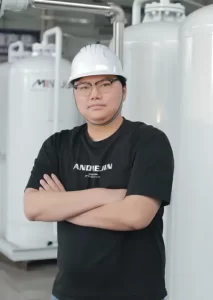

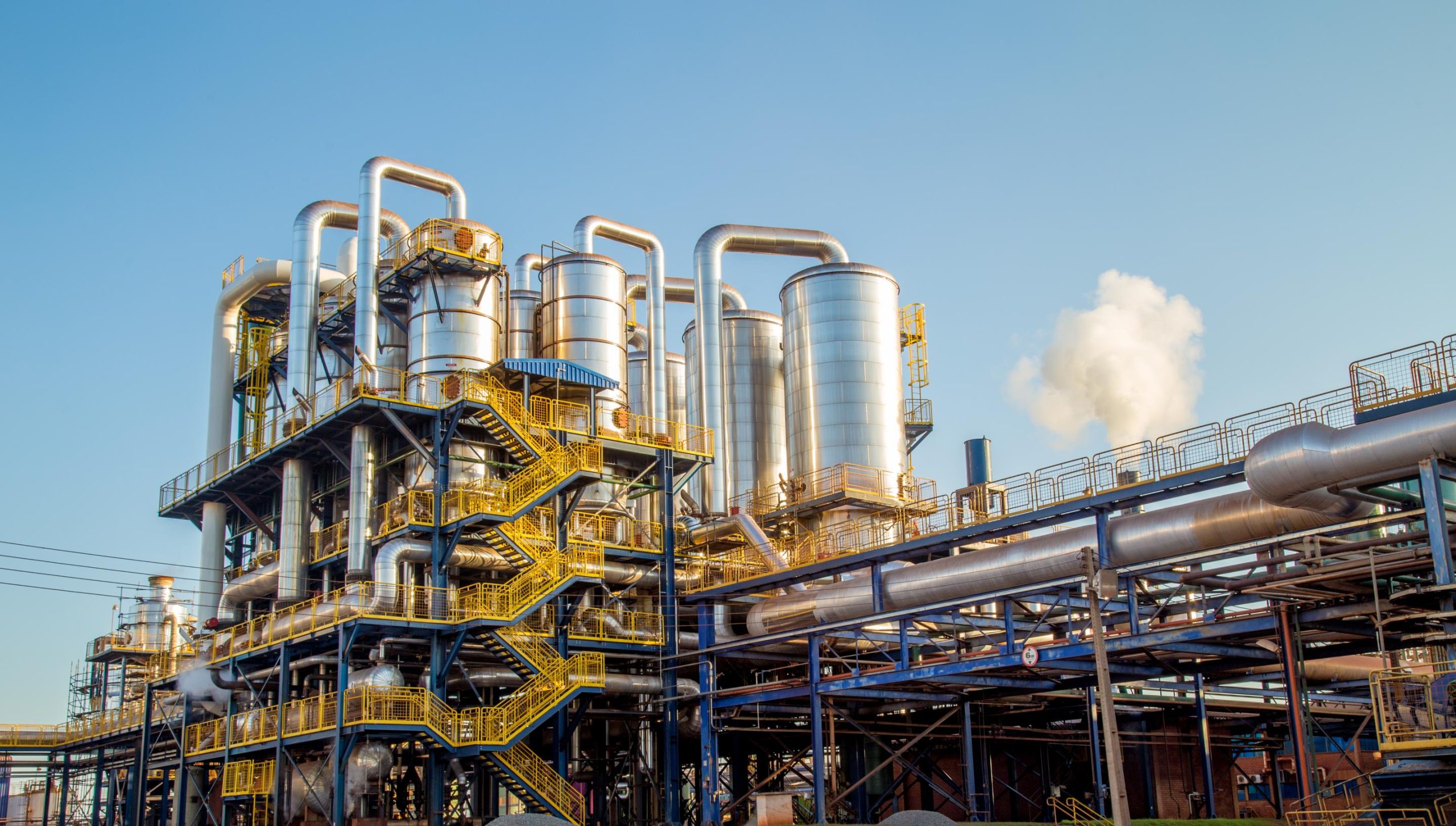
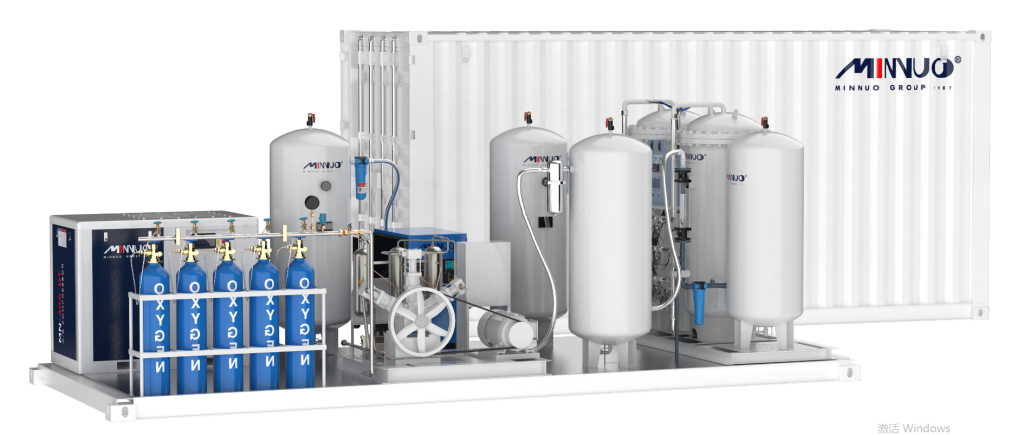

 sales2:+86 17506119168
sales2:+86 17506119168

